Caterpillars are eating machines, their only purpose is to eat as much as fast as they can to grow and pupate into a big healthy butterfly or moth.
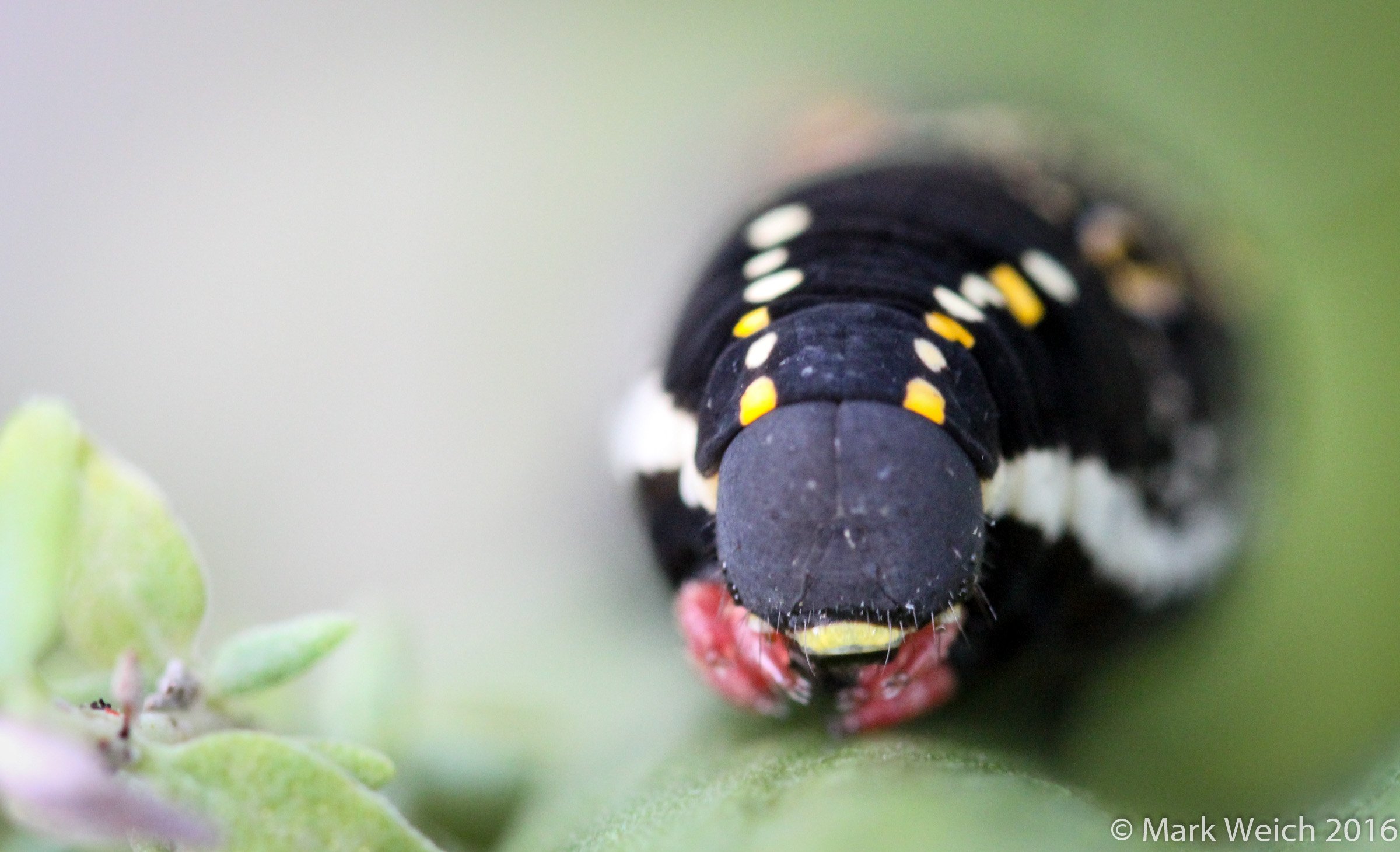
This head on view reveals the seemingly too small head with four pairs of eyes on the lower right and left, as well as the three pairs of red primary legs.
A closer view of the head: it's almost entirely a mouth.
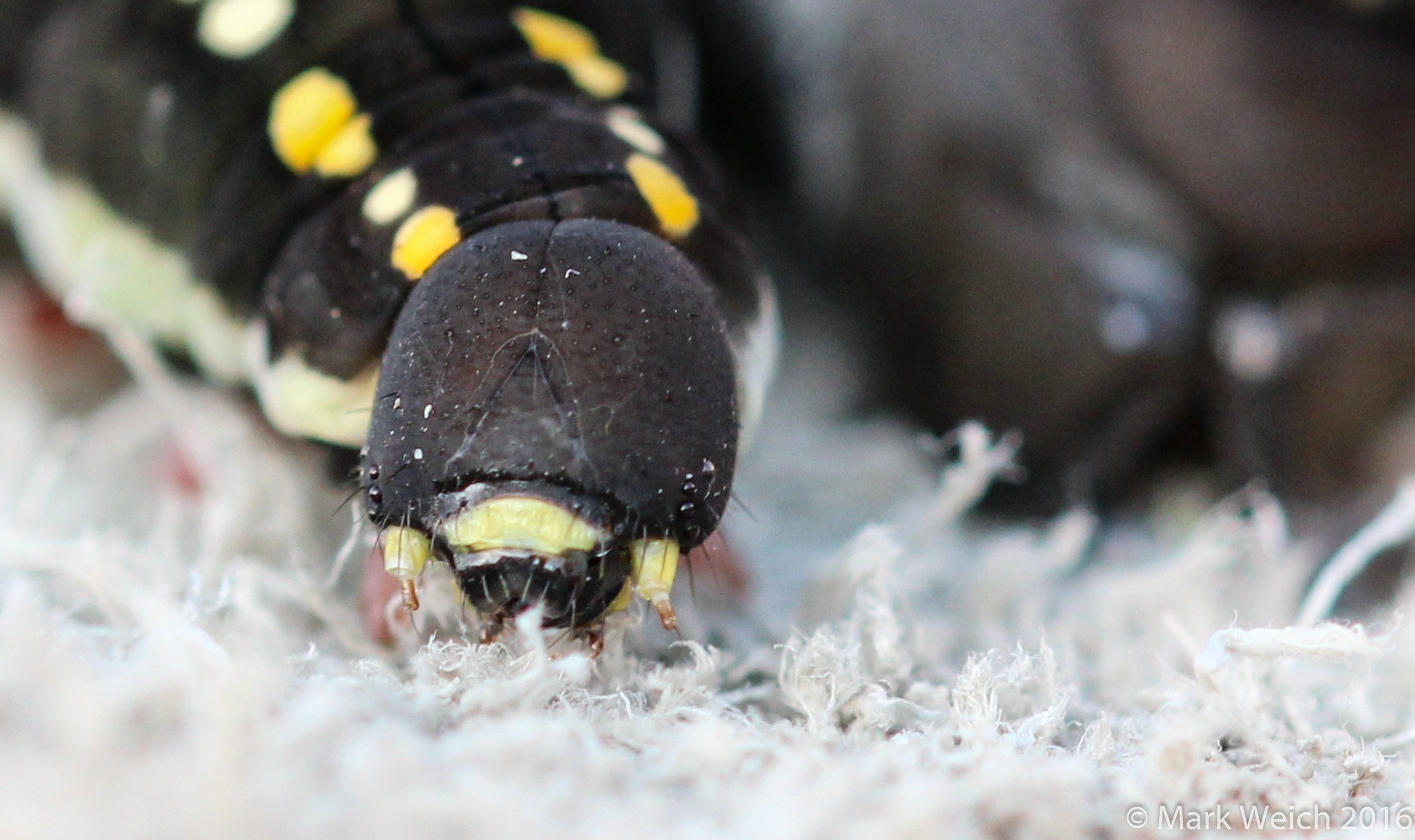
There are some stubby antenae and we can see it's tiny little eyes. The adult moth has rather large eyes and very well developed antenae, it's quite a transformation!
It's on a leather glove as I was relocating 6 or 7 of these monsters. They are quite prolific, which helps when your only defenses are looking scary and pooping on whatever attacks you (hence the gloves).
A bit like the ancient plant eating sauropod dinosaurs with their implausibly small heads feeding a gigantic body:
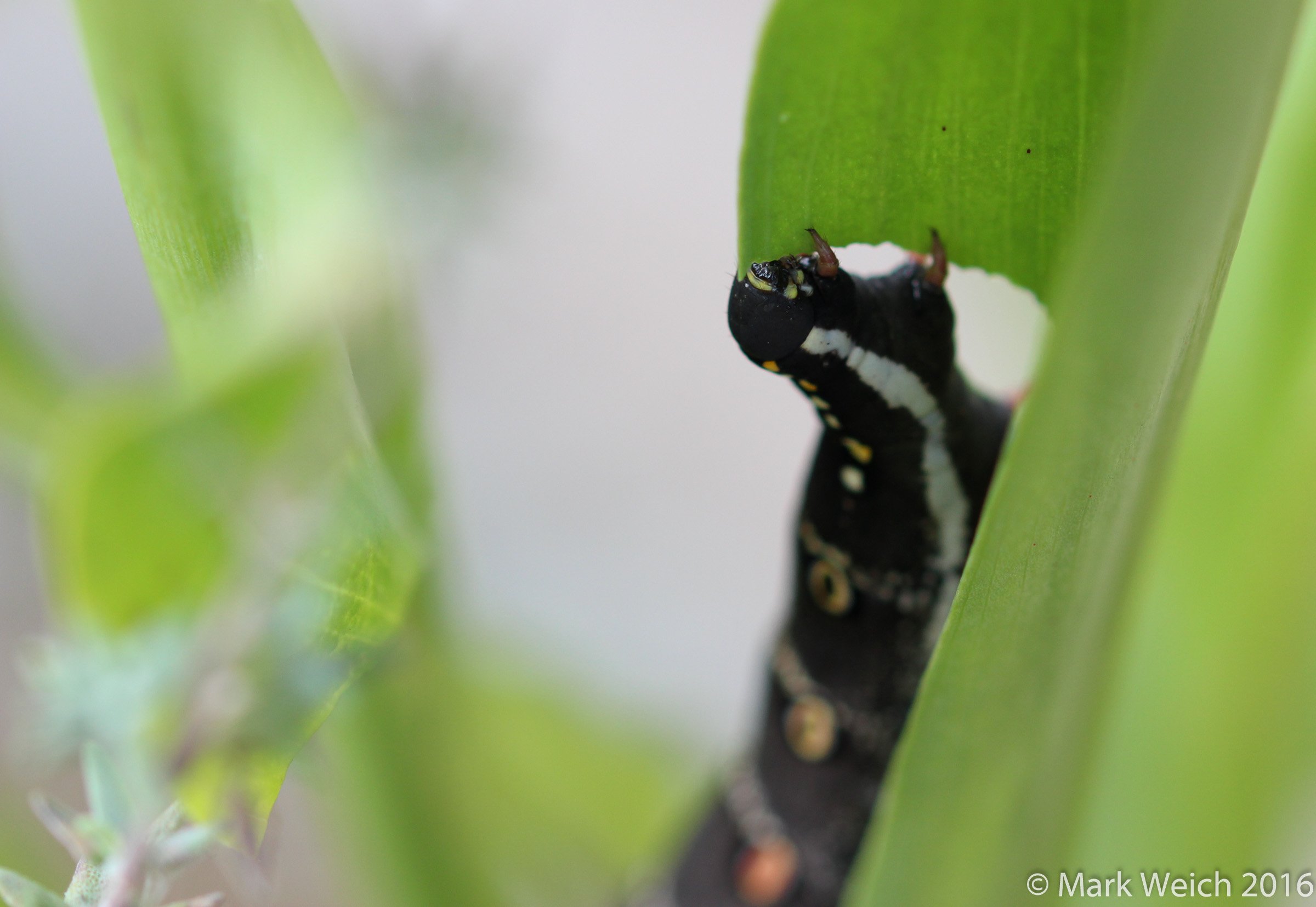
Salad is the appetiser, main course and dessert, everyday, all day!
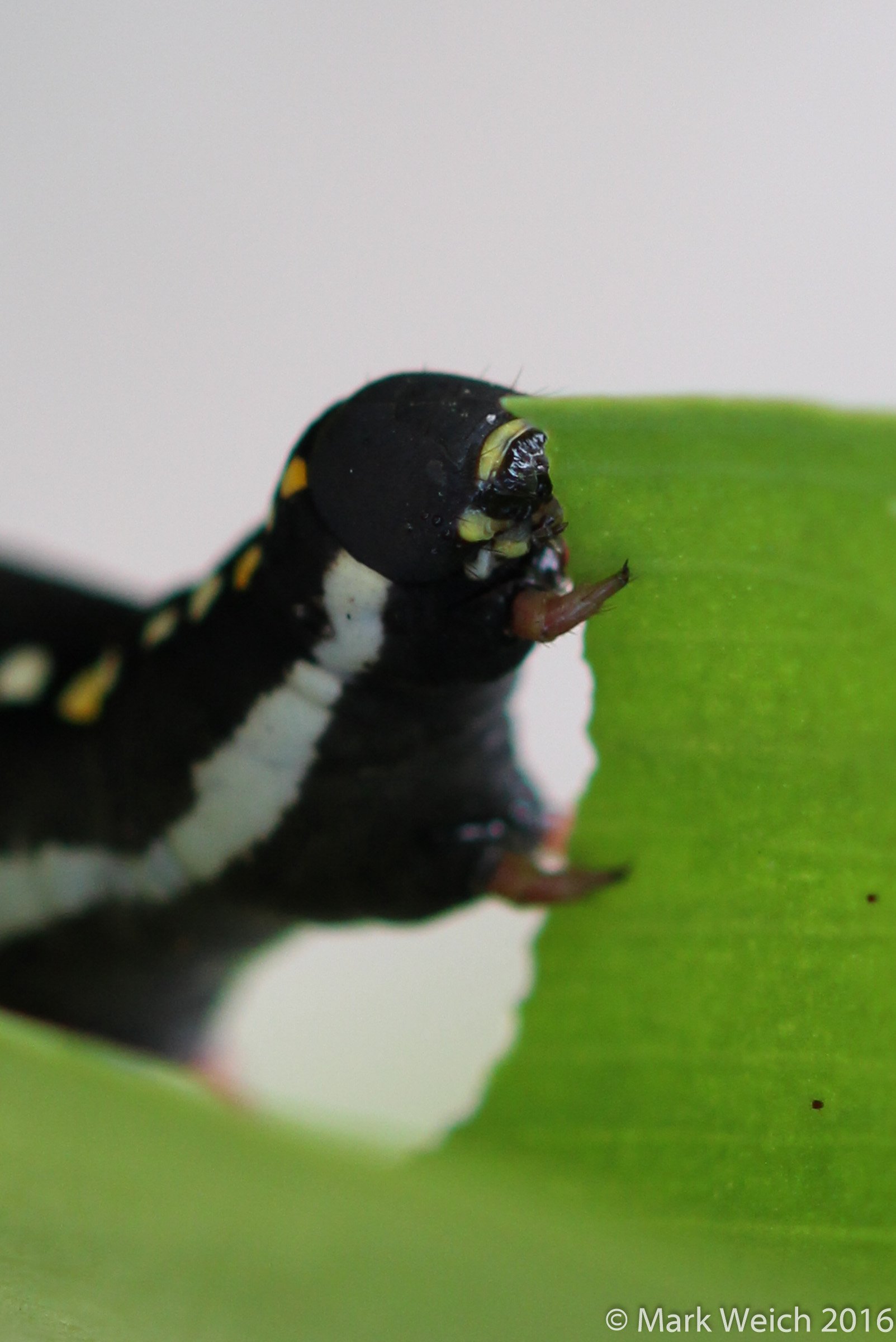
Though it's called the Impatiens Hawkmoth it was not eating up the impatiense but some other leafy plant which must be very tasty as these caterpillars are chewing it up every year and leaving the impatiens alone for the most part.
Many of these caterpillars are quite large! This first species: the Inpatiens Hawkmoth (Theretra oldenlandiae) is a rather large moth and it's black, eye-spotted caterpillar reaches about the size of an adult's finger!
Sphinx Moths and Hawk Moths are also sometimes called hornworms; when they are caterpillars they have a horn or stick like projection at the prosterior end. Perhaps to have predators attack the back of the caterpillar rather than it's rasion de etre, the head and mouth.
Relocation in progress: Brothers and sisters, large and small! I was fortunate to get several stages of caterpillar development at the same time!
The start quite small and mostly black with a few yellow spots:
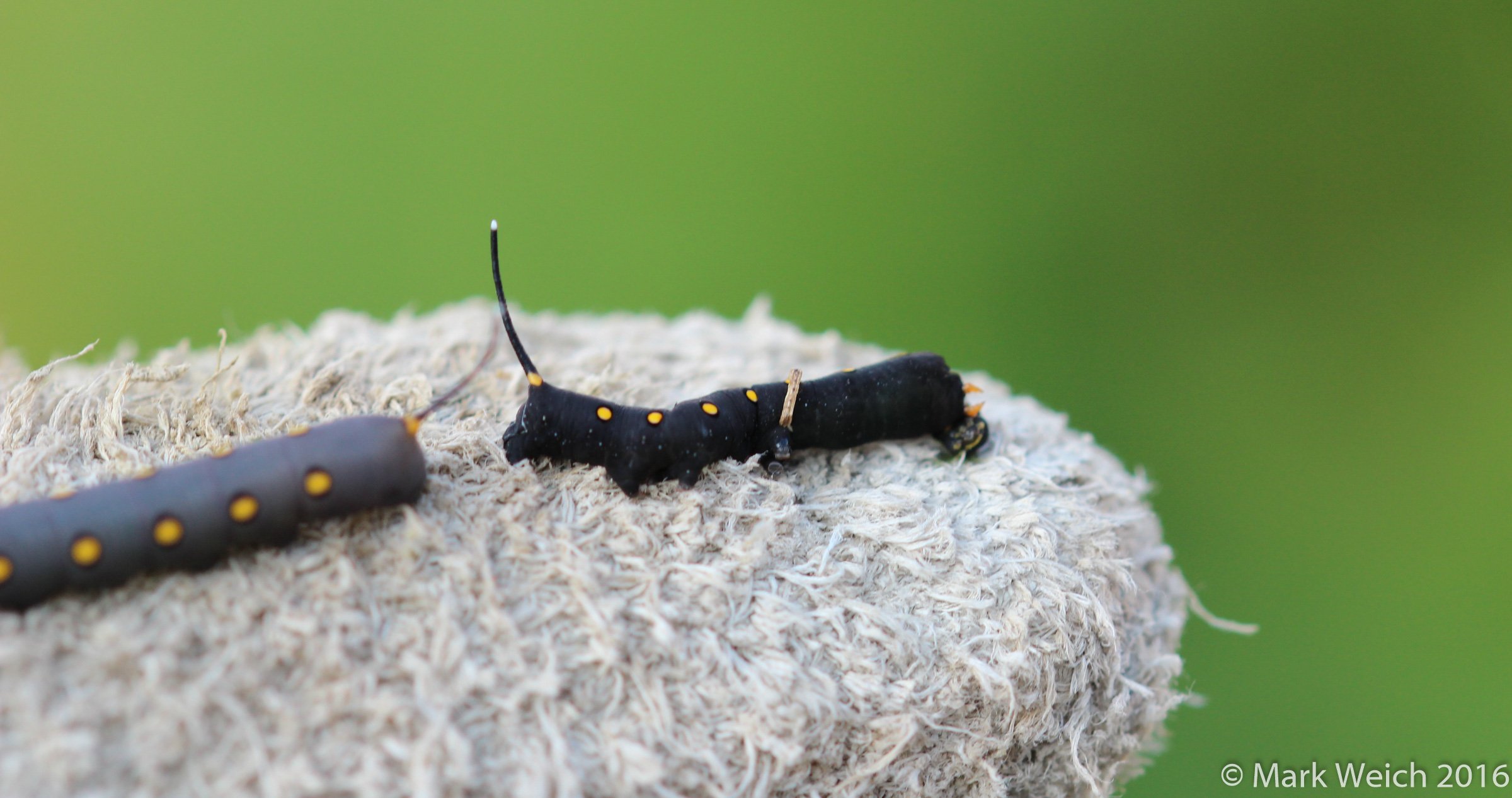
On the thumb of the glove. Yes, that's a poor size reference. About 20mm long.
At about 40mm:

The colour is now grey and the eye spots have rings.
The abdominal prolegs are also easy to discern. These function as strong gripping limbs for the caterpillar but are completely lost once it metamophosises into the adult form.
Nearly ready to pupate (100mm):
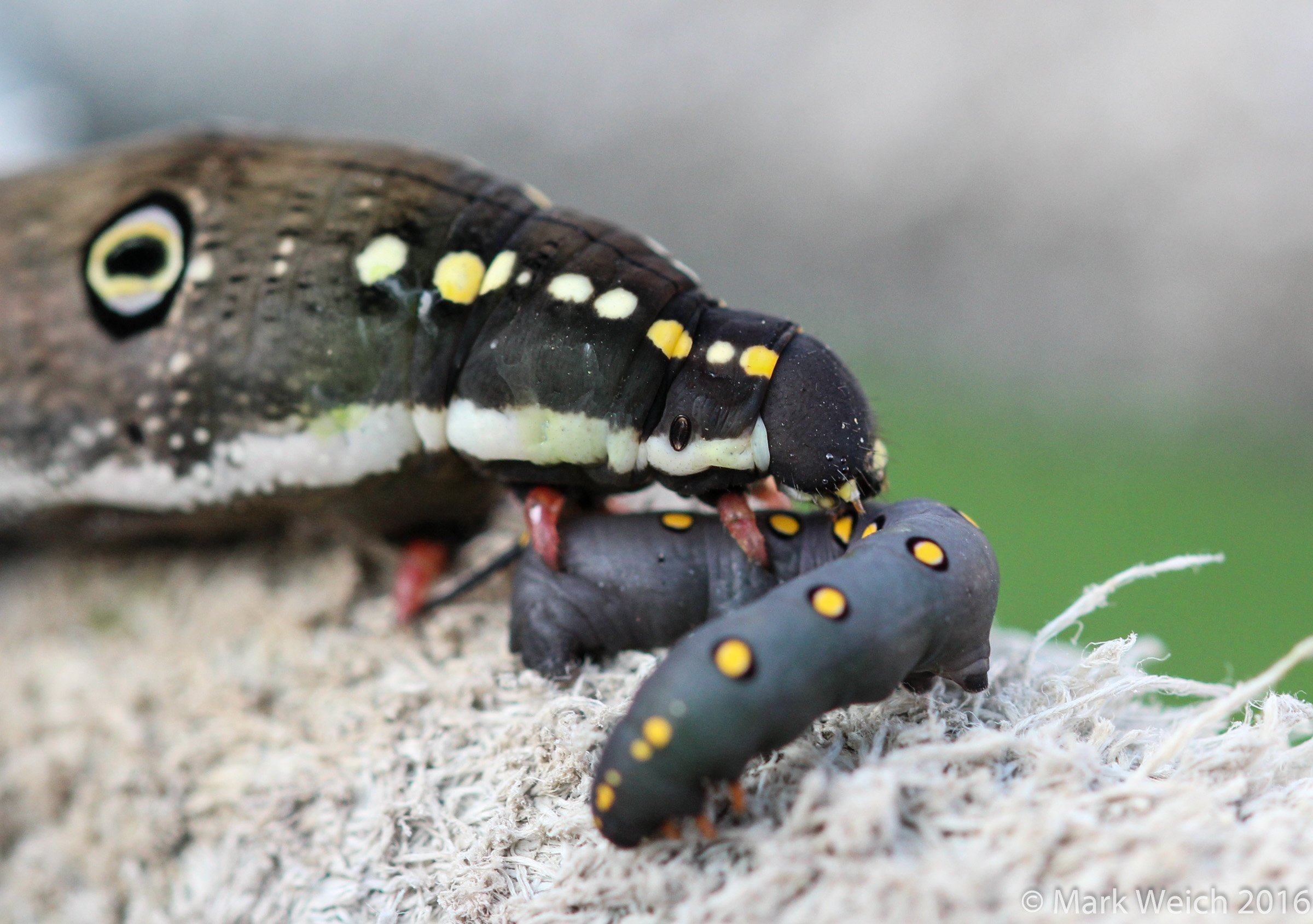
They don't eat each other, but have terrible eyesight, it may not yet realize that it's grasping another caterpillar rather than a branch.
Another strange feature, in addition to the tail spike, are the anal prolegs a three part 'foot' on the very end, using the same basic structure as the abdominal pro-legs, the anal pro-legs are quite strong and it took a firm tug, strong enough that I was worried about damaging the caterpillar, to dislodge the caterpillar from the glove when it was time to release them to their new home.
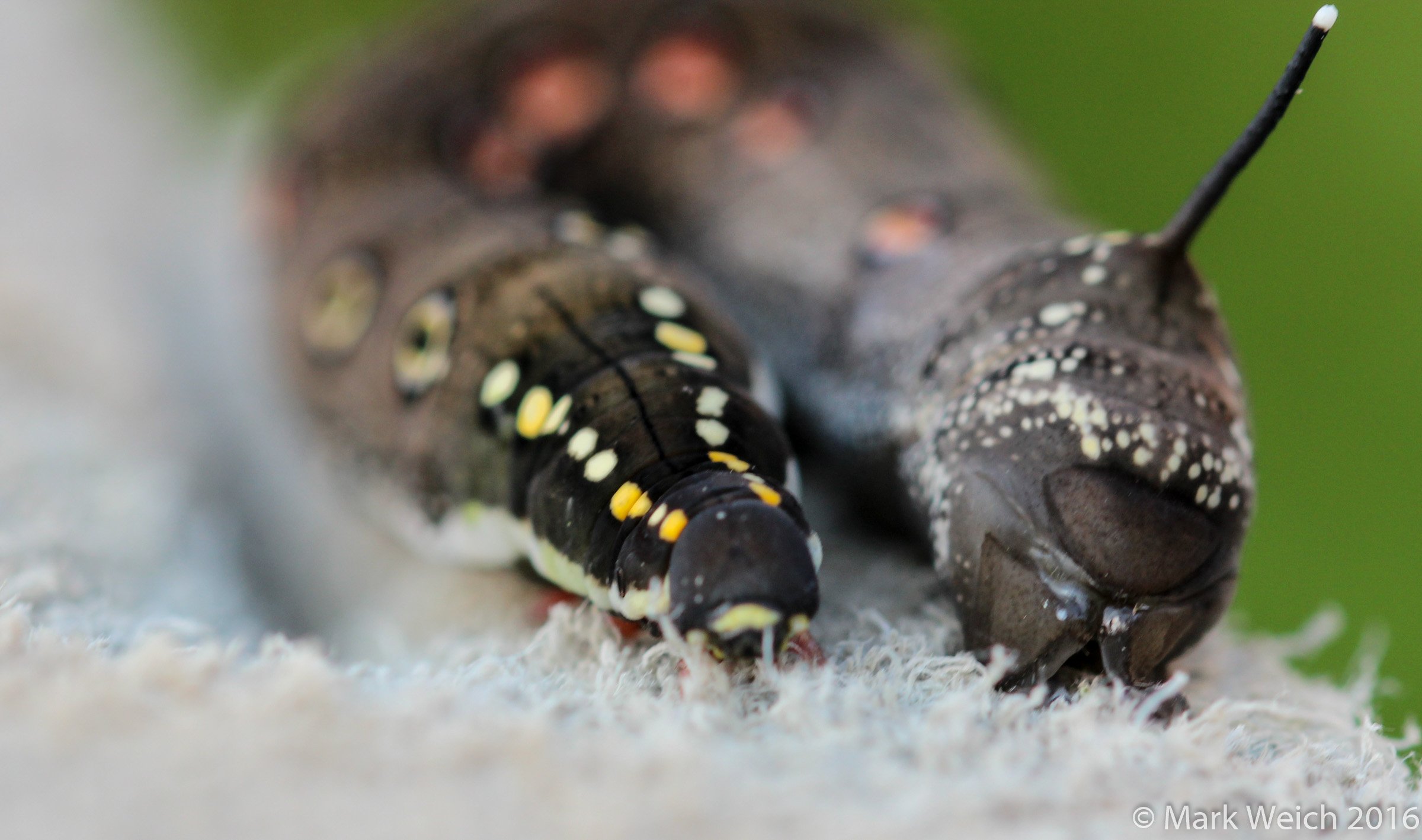
It also looks a bit like a spaceport door.
More eye spots!

After eat up all of my plants, burrowing into the ground to pupate, it will emerge as a swiftly flying Hawkmoth!
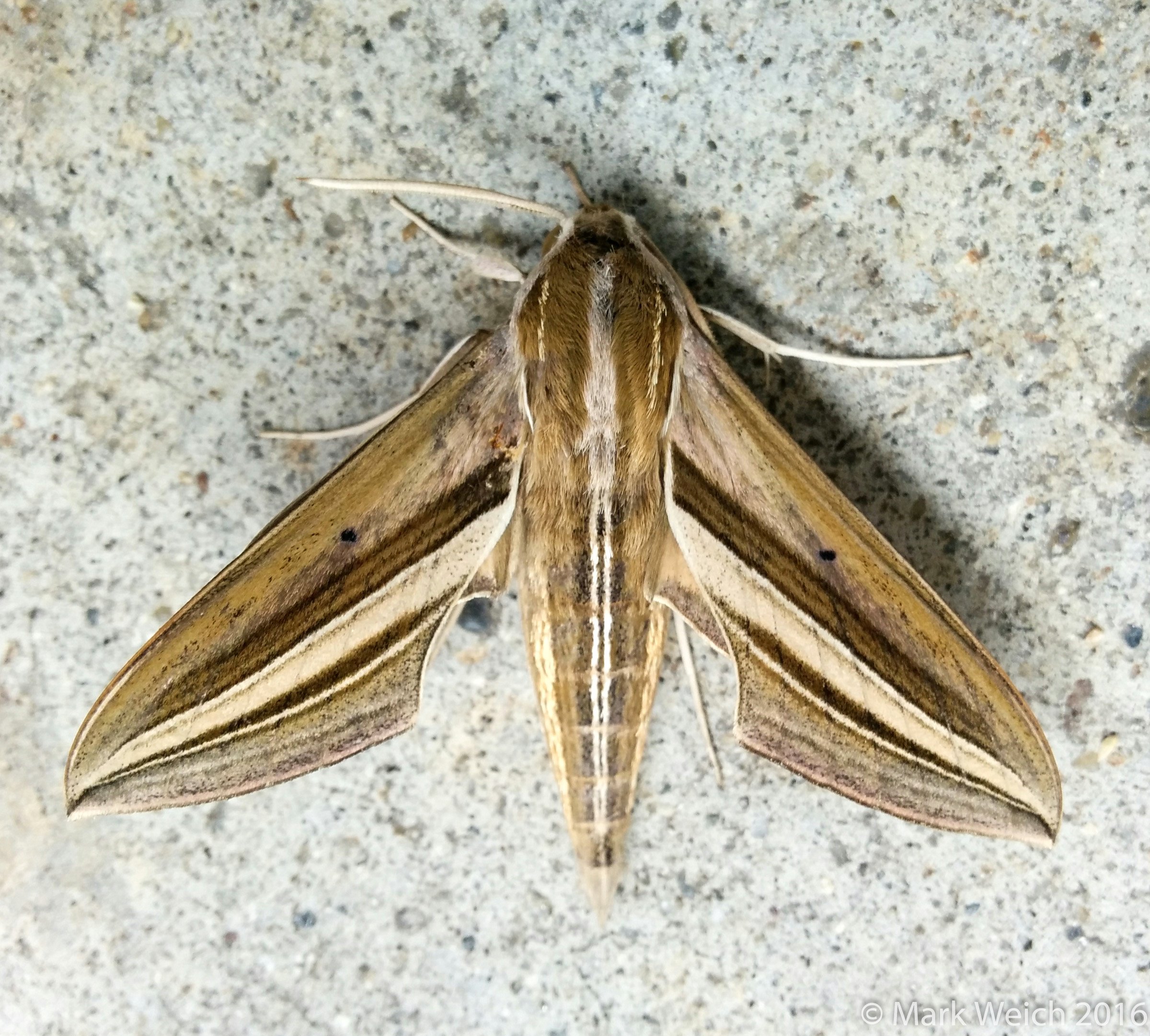
Many moths are very slow and easy targets for bats, Hawkmoths use speed to get away from their predators and camouflage to hide during the day.
This related Hawkmoth, the Convolvulus Hawkmoth (Agrius convolvuli) relies more on camouflage and is nearly indistinguishable from tree bark, unless of course it's on the dark brown fence post, where it is very easy to spot!
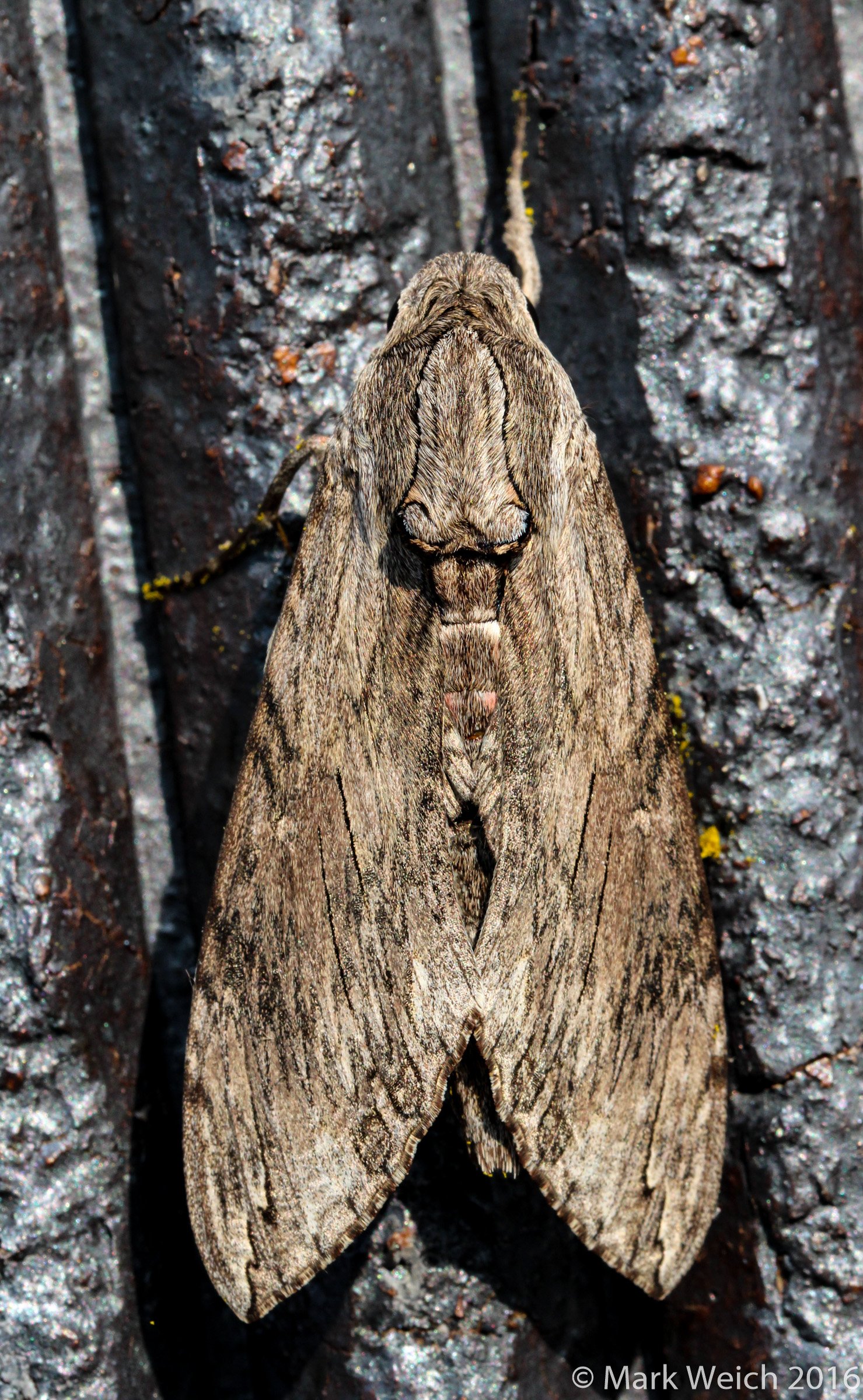
Viewed from the side, we can see that these moths have a very powerfully build thorax housing the large muscles it needs to power its large wings for rapid flight!
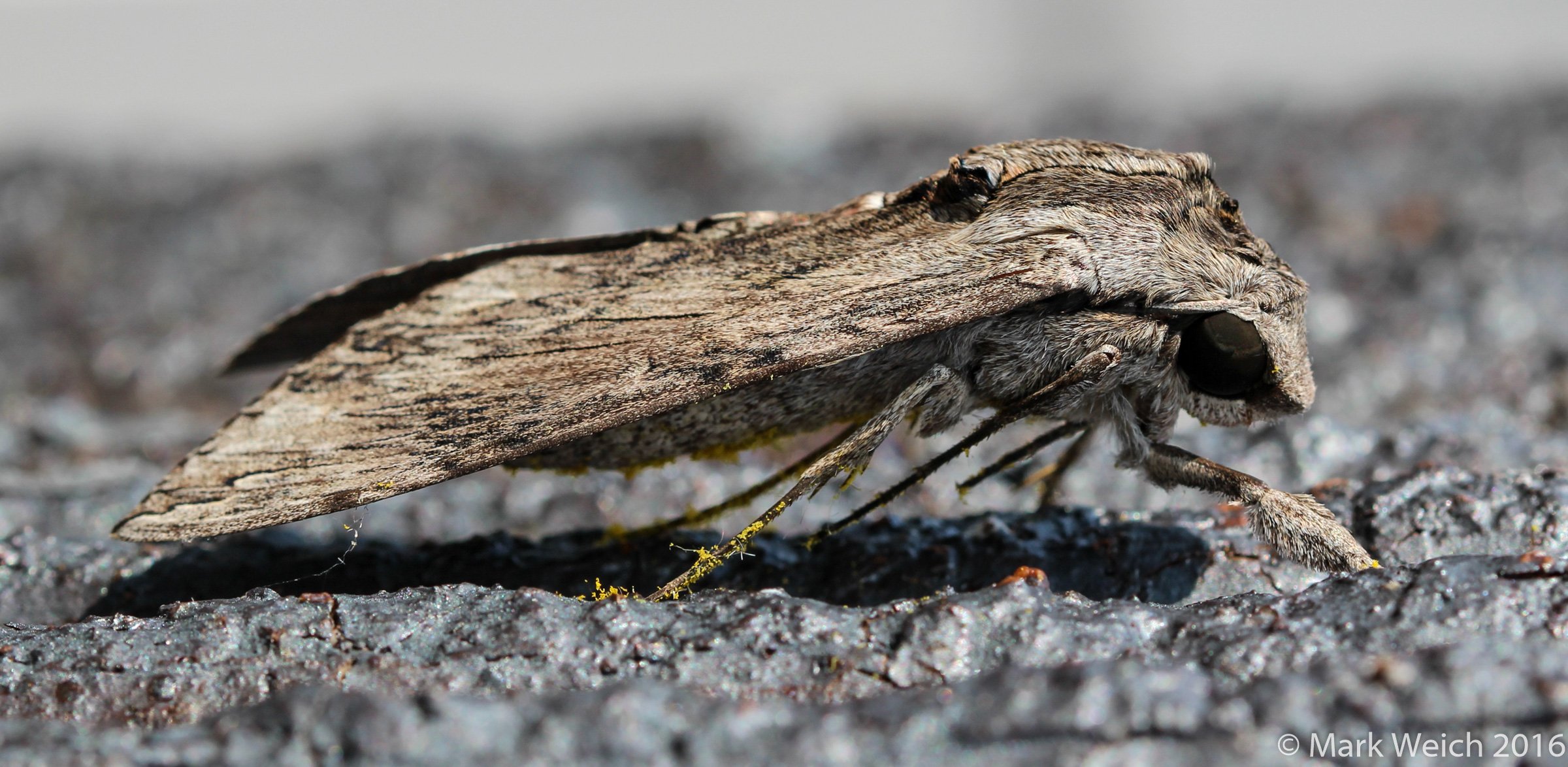
Everyday is wing day at the gym.
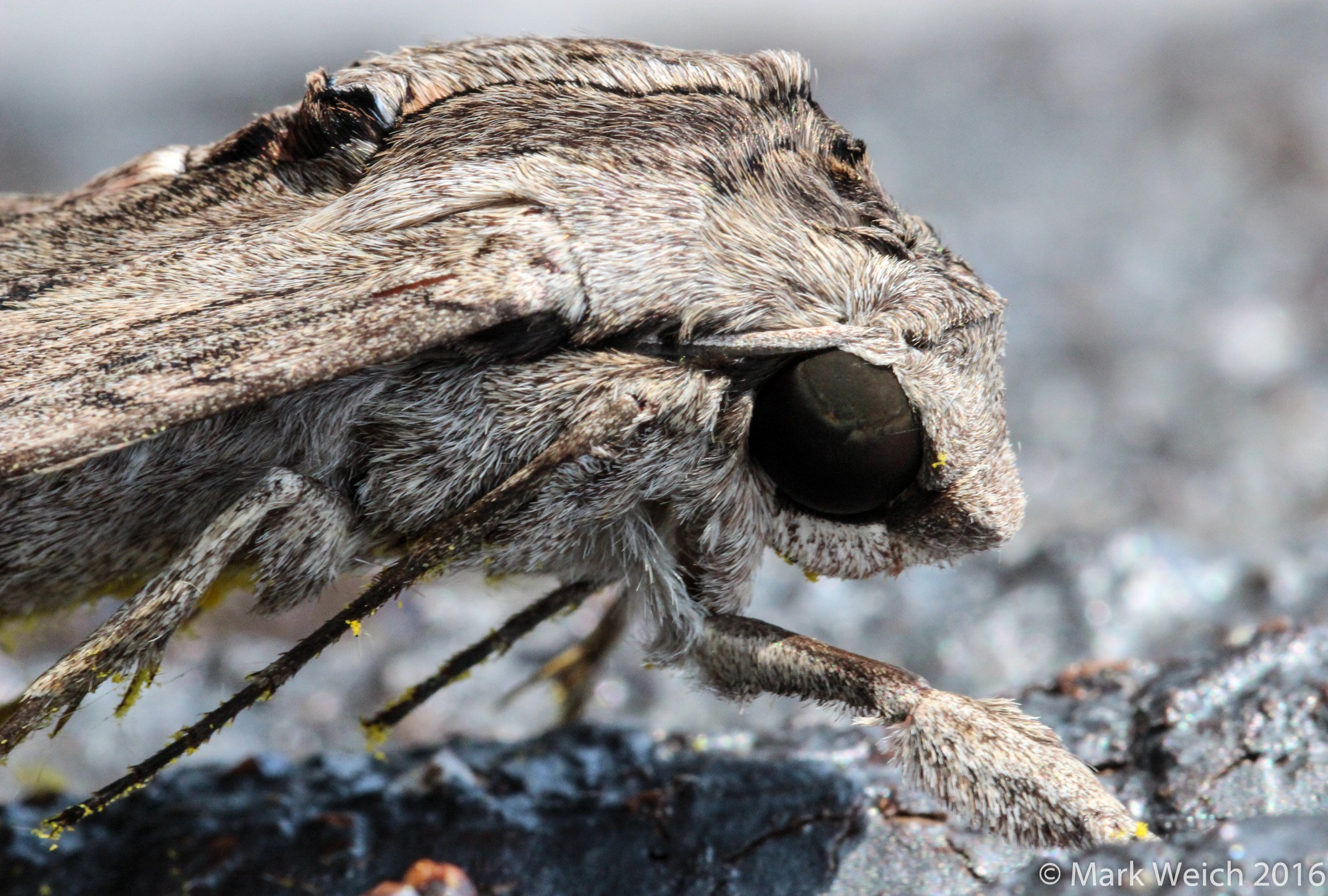
In addition to being literally carpeted with hair, this Convolvulus Hawkmoth has great style with matching boots!

I imagine their eye sight is quite a bit better than when they were caterpillars!
Information and facts from Sphingidae (Sphinx and Hawkmoths) and Caterpillar at Wikipedia.
Very helpful page for species identification in Japan, in Japanese スズメガ図鑑
I hope you are enjoying these posts as much as I do writing them!
Comments and feedback are always welcome.
Please upvote and follow to see the next installment in your feed!
Reblog if you think your followers would enjoy this post, thanks!
Also, if you like macro photography, check out some of the earlier posts in this series.
Little Monsters - Part I: Wolf Spiders
Little Monsters - Part II: Golden Orb Weaver
Little Monsters - Part III: Lynx Spiders!
Little Monsters - Part IV: Decorator Orb Weaver
Little Monsters - Part V: Black Back Paper Wasp
Little Monsters - Part VI: Dragonfly
Little Monsters - Part VII: Indian Fritallary
Little Monsters - Part VIII: Giant Japanese Hornet
Little Monsters - Part IX: Praying Mantis!
Little Monsters - Part X: Harlequin Ladybird!
Little Monsters - Part XI: Dragons!
Little Monsters - Part XII: Snails!
Little Monsters - Part XIII: Evil Weevils!
Little Monsters - Part XIV: Fantastic Phasmids!
Little Monsters - Part XV: To Bee or not to Bee?
Little Monsters - Part 16: Jumping Spiders!
I maintain and reserve copyright on all of my photos.
